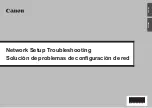
377
[SwitchA-Vlan-interface103] quit
The configuration on Switch B and Switch C is similar to that on Switch A.
# Enable IPv6 multicast routing on Switch D, and enable IPv6 PIM-DM on each interface.
<SwitchD> system-view
[SwitchD] multicast ipv6 routing-enable
[SwitchD] interface vlan-interface 300
[SwitchD-Vlan-interface300] pim ipv6 dm
[SwitchD-Vlan-interface300] quit
[SwitchD] interface vlan-interface 103
[SwitchD-Vlan-interface103] pim ipv6 dm
[SwitchD-Vlan-interface103] quit
[SwitchD] interface vlan-interface 101
[SwitchD-Vlan-interface101] pim ipv6 dm
[SwitchD-Vlan-interface101] quit
[SwitchD] interface vlan-interface 102
[SwitchD-Vlan-interface102] pim ipv6 dm
[SwitchD-Vlan-interface102] quit
3.
Verify the configuration.
Use the
display pim ipv6 interface
command to view the IPv6 PIM configuration and running status on
each interface. For example:
# View the IPv6 PIM configuration information on Switch D.
[SwitchD] display pim ipv6 interface
Interface NbrCnt HelloInt DR-Pri DR-Address
Vlan300 0 30 1 4001::1
(local)
Vlan103 0 30 1 1002::2
(local)
Vlan101 1 30 1 2002::2
(local)
Vlan102 1 30 1 3001::2
(local)
Use the
display pim ipv6 neighbor
command to view the IPv6 PIM neighboring relationships among the
switches. For example:
# View the IPv6 PIM neighboring relationships on Switch D.
[SwitchD] display pim ipv6 neighbor
Total Number of Neighbors = 3
Neighbor Interface Uptime Expires Dr-Priority
1002::1 Vlan103 00:04:00 00:01:29 1
2002::1 Vlan101 00:04:16 00:01:29 3
3001::1 Vlan102 00:03:54 00:01:17 5
Assume that Host A needs to receive the information addressed to IPv6 multicast group G (FF0E::101).
After IPv6 multicast source S (4001::100/64) sends IPv6 multicast packets to the IPv6 multicast group G,
an SPT is established through traffic flooding. Switches on the SPT path—Switch A and Switch D—have
their (S, G) entries. Host A sends an MLD report to Switch A to join IPv6 multicast group G, and a (*, G)
Summary of Contents for A5500 EI Switch Series
Page 12: ...xii Conventions 425 Index 427 ...
















































